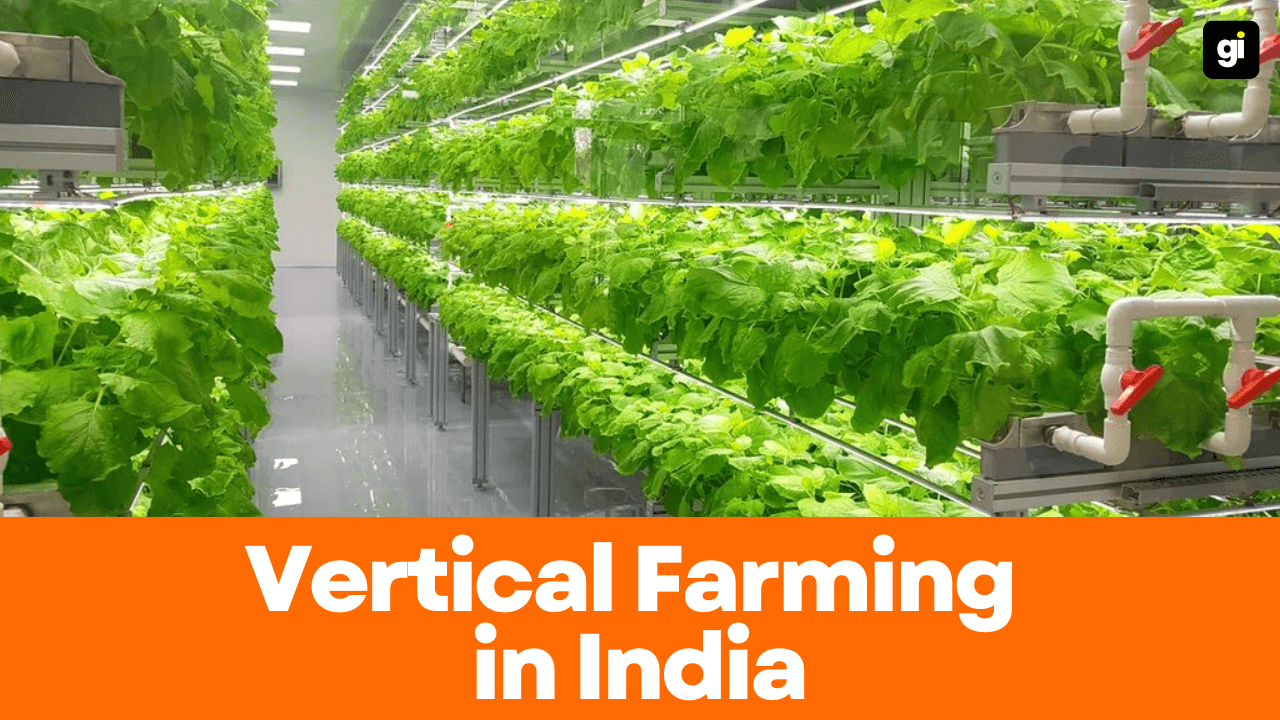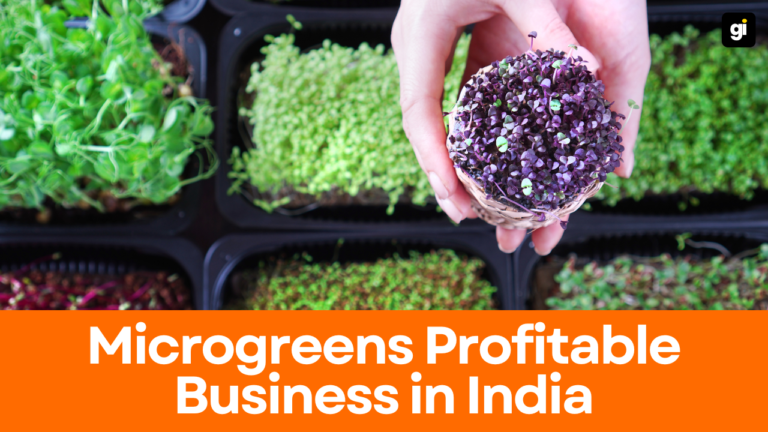Vertical Farming in India: A Complete Guide to Start Your Own Farm

Vertical farming is transforming agriculture by growing food in stacked layers inside controlled environments. This unique technology provides year-round food production while maximizing space efficiency and conserving resources through the use of techniques like hydroponics, aeroponics, and aquaponics.
Vertical farming is an innovative and eco-friendly way to grow fresh, local food to meet the increasing demand. This blog looks at vertical farming in India, like its prospects, market growth, new technologies, and tips on how to start your own vertical farm.
What is Vertical Farming in India?

Vertical farming in India is an innovative agricultural method where crops are grown in stacked layers using controlled environments. It utilizes technologies like hydroponics, aeroponics, and aquaponics to maximize yield while minimizing land and water usage.
Why Is Vertical Farming Growing in India?
- Perfect for highly developed places with little agriculture due to space efficiency.
- In comparison to conventional farming, this method consumes 90% less water.
- Continuous farming is made possible by controlled settings, allowing for crop production all year round.
- Some methods, like hydroponics, do not even need soil.
- Grown without pesticides, crops are healthier since soil-borne diseases are no longer an issue.
- Very resistant to climate change; does not suffer damage from flooding, drought, or seasonal shifts.
- As cities expand and food delivery prices increase, vertical farming has developed into a practical way to get nutritious foods closer to people.
Indian Vertical Farming Market Growth and Potential
The vertical farming business in India is growing quickly due to new technology and a rising demand for organic food.
Important Market Data
- Market Size (2023): $67 million
- Expected market size in 2032: $444.8 million.
- Expected Annual growth rate from 2024 to 2032: 23.41% (IMARC Group).
Investments in vertical farming are being moved by the need for locally grown, chemical-free food. Startups and companies are investing money into urban farming projects, and the government is helping with subsidies and laws that encourage sustainable farming.
Developments in Vertical Farming
Using modern technology has sped up the growth of vertical farming in India. These technologies are making vertical farming easier and more affordable for farmers and business owners in India. Some important developments are mentioned below.
1. Hydroponics
- Plants can grow in water filled with nutrients instead of dirt.
- Water use is 90% lower compared to cultivating in soil.
- Preferred for growing leafy greens, herbs, and unique foods.
2. Aeroponics
- Roots are attached to the air and sprayed with a nutrient mist.
- Compared to conventional farming, it uses 95% less water.
- The growth of plants is enhanced by increasing their exposure to oxygen.
3. AI and IoT
- Sensors track temperature, humidity, and light.
- AI data improve the conditions for plant growth.
- Boosts productivity with less help from humans.
4. LED Lighting Systems
- Simulates sunlight for indoor farming.
- Adjusts light levels for different stages of plant growth.
- Enhances photosynthesis efficiency for better yields.
How to Start Vertical Farming in India?
To start a vertical farm, you need to plan well, spend money, and have the right technology. Here’s a step-by-step guide:
Pick the Best Vertical Farming Method
Choose between hydroponics, aeroponics, or aquaponics based on how much money you have, the space available, and what crops you want to grow. Hydroponics is the most famous method in India due to its ease of setup and high yields.
Also Read This: The Future of Saffron Farming Business: A Guide to Indoor Farming Success
Choose the Best Place
Once you have selected the farming method, the next step is to find a suitable location.
For example, rooftops, city centers, and unused warehouses are excellent choices for vertical farming. Moreover, being close to markets significantly reduces transportation costs, making operations more profitable.
In addition, it is important to ensure that the selected location has reliable power, clean water, and an efficient waste management system to support continuous farming activities.
Buy the Right Equipment
High-quality equipment is helping to maximize productivity. Specifically, vertical stacking shelves help optimize space, while water pumps and nutrient delivery systems ensure proper irrigation. Since vertical farms often operate indoors, installing LED grow lights is necessary to provide sufficient lighting for plant growth. Furthermore, climate control systems help maintain the ideal temperature and humidity levels.
Choose the Best Crops for Vertical Farming
Selecting the right crops is another key factor for success. Notably, some of the most profitable crops for vertical farming in India,
- Leafy greens (lettuce, spinach, kale)
- Herbs (basil, mint, cilantro)
- Microgreens
- Strawberries
- Tomatoes
- Peppers
These crops, in particular, are in high demand, have short growth cycles, and yield high returns. Moreover, they require less space, making them ideal for vertical farming setups.
Control Expenses and Funding
Setting up a vertical farm requires a significant investment, with costs ranging from ₹10 lakhs to ₹50 lakhs, depending on the farm’s size and technology. Fortunately, several funding options are available.
For example, farmers can apply for government subsidies for hydroponic farming, agricultural loans, and startup funding.
Additionally, private investments and business partnerships can provide the necessary financial support. To improve profitability, it is advisable to use energy-efficient solutions and automation technologies, which help lower operational costs over time.
Create a Marketing Plan
To be successful, a vertical farm needs a well-thought-out marketing plan. Since urban consumers are increasingly looking for fresh, organic, and pesticide-free produce, targeting them can be highly beneficial.
Additionally, partnering with restaurants, grocery stores, and online delivery platforms can create a steady demand for your products. Furthermore, highlighting the sustainability and eco-friendly nature of vertical farming can attract health-conscious customers.
In addition, digital marketing and social media can help you reach more people and establish your brand more strongly.
What are the problems or difficulties?
High Setup Costs
The expense of new technology and equipment can be a hurdle.
Energy Use
LED lights and climate control systems raise power bills.
Lack of knowledge
Farmers need training to handle hydroponic and IoT systems because there aren’t enough skilled workers.
Even with these challenges, new technology and support from policies make vertical farming a good chance in India.
Wrapping It Up
Vertical farming shows an innovative approach to modern agriculture in India. As cities grow, worries about climate change and the need for more food are rising. This new method provides an answer that is sustainable and uses resources effectively. It is possible for India to achieve food security and environmental sustainability through full implementation of vertical farming if the country invests in education, infrastructure, and technology.
FAQs
Yes, vertical farming can make money because it produces more crops, uses less water, and there is a growing desire for organic food. Many new businesses are earning good money by providing fresh vegetables to city shops.
The cost depends on the size and type of technology used. A small hydroponic system can cost between ₹10 and ₹15 lakhs, while a big commercial farm can cost ₹50 lakhs or more.
Table of Contents






